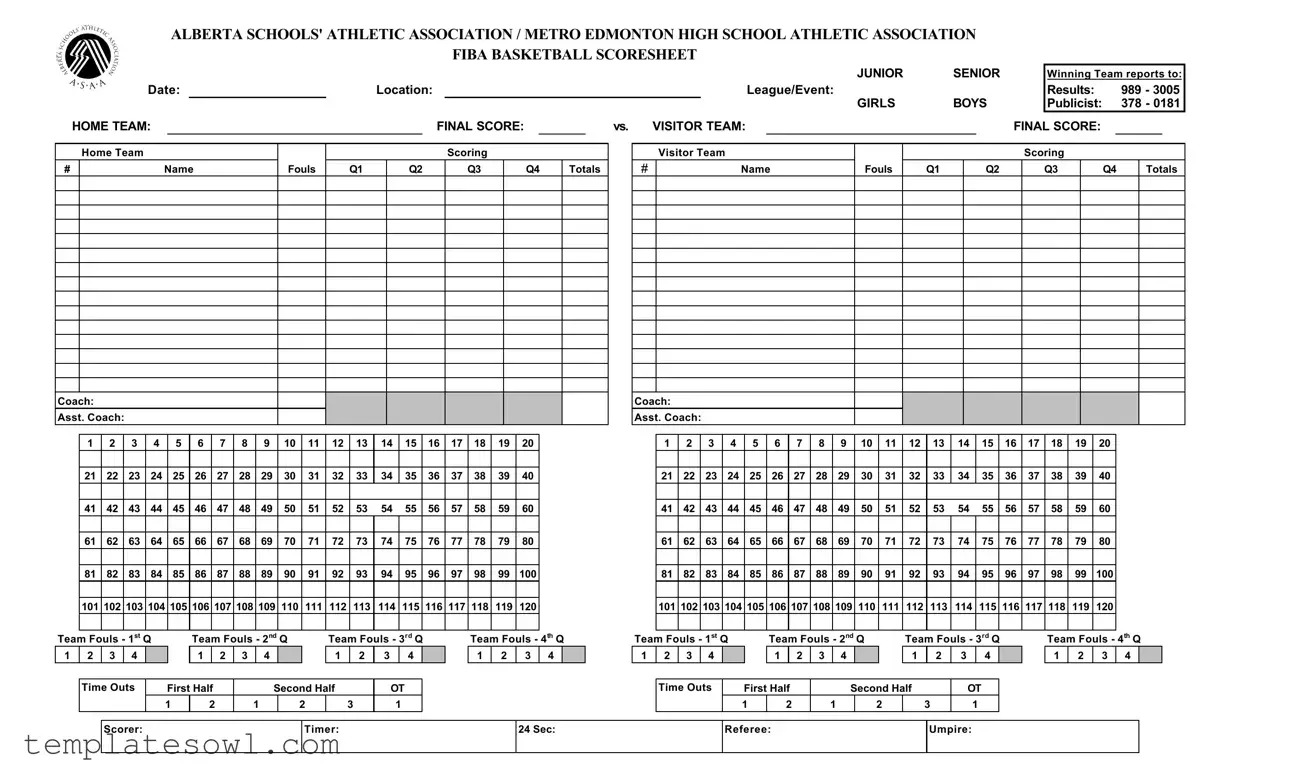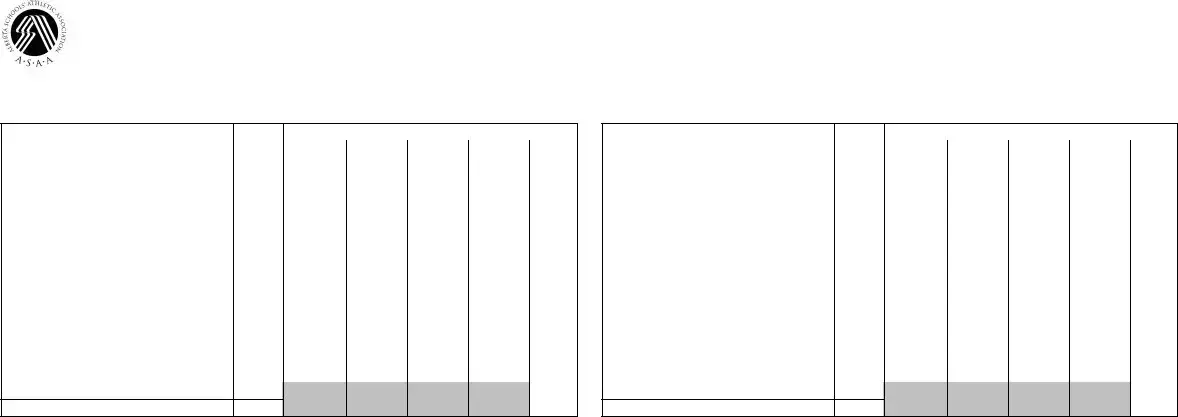What is the purpose of the Basketball Scoresheet form?
The Basketball Scoresheet form serves as an official record of a basketball game. It tracks individual player performance, team fouls, time-outs, and the overall score for both the home and visitor teams. This documentation is crucial for maintaining an accurate history of the game's events and statistics.
Who is responsible for filling out the scoresheet?
The home team's official scorer typically fills out the scoresheet. This person keeps track of player statistics, points scored, fouls, and other important details during the game. Cooperation among coaches, referees, and scorekeepers is vital to ensure accuracy.
What information is required at the top of the scoresheet?
The top section of the scoresheet includes several essential details, such as the date of the game, the location, and the league or event being played. Additionally, it requires the names of both teams, allowing for a clear and organized presentation of the game's context.
How are team fouls recorded on the scoresheet?
Team fouls are recorded in specific boxes corresponding to each quarter of the game. The scorer writes down the total fouls for both teams at the end of each quarter, ensuring that officials can keep track of the number of fouls and manage player eligibility effectively.
What is the significance of tracking individual player statistics?
Tracking individual player statistics, such as points scored, fouls, and minutes played, is important for coaches and players alike. It helps coaches evaluate player performance and make informed decisions for future games. Players can also use this data to understand their strengths and areas for improvement.
Can the scoresheet be adjusted after it is filled out?
Once the scoresheet is finalized, it should remain as is. Alterations after the game may lead to confusion or disputes regarding the game's results. Therefore, it is crucial to ensure that all information is accurate before finalizing the scoresheet.
What role do referees play in the scoresheet process?
Referees contribute to the scoresheet process by confirming the accuracy of the recorded statistics and ensuring that the game is played within the rules. They may also be responsible for signing the scoresheet at the end of the game, validating its contents.
How should time-outs be documented?
Time-outs should be accurately documented in the designated sections of the scoresheet. The scorer must record the number of time-outs taken by each team during both halves and any overtime periods. This information is crucial for officials in managing game time and player strategy.
What happens if there is a discrepancy in the scoresheet?
If a discrepancy arises on the scoresheet, it is essential to address it immediately, preferably before the game concludes. Coaches, referees, and scorers should work together to resolve any issues. Proper communication is key to maintaining the integrity of the game's record.
Where can the completed scoresheet be submitted after the game?
The completed scoresheet should be submitted to the appropriate league or event authority, often the designated publicist or league official, as noted on the form. This ensures that the statistics and results are officially recorded for future reference and analysis.

